The underlying issue of globalization is perhaps one of the strongest forces driving the conflicts within the stories by South Asian, Commonwealth, and Black British writers that we are reading this week, and although all of them were written prior to 9/11, they anticipate many post-9/11 issues and fears. At the same time, the texts deal with an enduring theme within modern culture, and the modern world—and by modern, I mean beginning in the late 16th Century, which is often referred to as the Early Modern Period—when global exploration began to increase (due to technological advancements) alongside the rise of imperialism and settler colonialism. These systems exacerbated the enduring human conflict between "self" and "other," only now re-positioned in binary terms of white vs. black, civilized vs. savage, west vs. east.
Imperialism, colonization, globalization—all of these inevitably lead to multiculturalism, multiplicity, pluralism. However, because it seems that it is human nature to fear diversity (though I’m wary of ascribing anything like racism, sexism, or any -ism as an inherent trait rather than socially and culturally learned), then multiplicity and pluralism seem anathema to any individual, communal, or national sense of identity, at least those invested in patriarchal and/or imperialist systems, which rely on the rejection and repression of otherness in order to maintain a sense of unified wholeness for those in power. To open oneself up to multiplicity makes one vulnerable to the fractured, fragmented self, or, requires empathy and identification with the other rather than hatred and repulsion. Or, put more simply, as examined in this week’s texts, each of the authors explore how due to massive influx and waves of immigration in post-WWII Britain (and often on the invitation of the British), in the late 20th Century Britain has found itself struggling with the clash between cultural traditions and diverse identities. British culture and Britain, as a nation, has been struggling with the need to redefine itself in light of its postcolonial realities and imperialist history, and the Brexit crisis is in many ways an extension of this.
In much of contemporary British literature, and more specifically the contemporary/postmodern historical novel, many of the texts function according to a complex temporal relation: they are shaped by the past, but, being part of the present literary landscape, they also reconfigure our understanding of Britain’s socio-cultural and political heritage of imperialism. Thus, it’s imperative to focus on examining the purposes and effects of contemporary authors’ appropriations of the past while simultaneously reiterating it in the environment of present post-colonial discourses by asking the following questions: How does the (post)colonial nation imagine and narrate itself through literary texts from both past and present eras? How do we transmit our knowledge of the past, or more problematically, how do we even know the ‘truth’ of the past? Does British culture dream its way back to the British Empire in order to find a way to articulate the social insecurities that pertain to existing in a globalized world? What are the dangers of nationalist nostalgia and to what extent do these texts critique the myths of nation and empire? These questions also lead to a more enriched understanding of those thematic aspects of nationhood, immigration, assimilation, diaspora, race, gender and class, which are explored in a great deal of postmodern, postcolonial, and popular British literatures.
Imperialism, colonization, globalization—all of these inevitably lead to multiculturalism, multiplicity, pluralism. However, because it seems that it is human nature to fear diversity (though I’m wary of ascribing anything like racism, sexism, or any -ism as an inherent trait rather than socially and culturally learned), then multiplicity and pluralism seem anathema to any individual, communal, or national sense of identity, at least those invested in patriarchal and/or imperialist systems, which rely on the rejection and repression of otherness in order to maintain a sense of unified wholeness for those in power. To open oneself up to multiplicity makes one vulnerable to the fractured, fragmented self, or, requires empathy and identification with the other rather than hatred and repulsion. Or, put more simply, as examined in this week’s texts, each of the authors explore how due to massive influx and waves of immigration in post-WWII Britain (and often on the invitation of the British), in the late 20th Century Britain has found itself struggling with the clash between cultural traditions and diverse identities. British culture and Britain, as a nation, has been struggling with the need to redefine itself in light of its postcolonial realities and imperialist history, and the Brexit crisis is in many ways an extension of this.
In much of contemporary British literature, and more specifically the contemporary/postmodern historical novel, many of the texts function according to a complex temporal relation: they are shaped by the past, but, being part of the present literary landscape, they also reconfigure our understanding of Britain’s socio-cultural and political heritage of imperialism. Thus, it’s imperative to focus on examining the purposes and effects of contemporary authors’ appropriations of the past while simultaneously reiterating it in the environment of present post-colonial discourses by asking the following questions: How does the (post)colonial nation imagine and narrate itself through literary texts from both past and present eras? How do we transmit our knowledge of the past, or more problematically, how do we even know the ‘truth’ of the past? Does British culture dream its way back to the British Empire in order to find a way to articulate the social insecurities that pertain to existing in a globalized world? What are the dangers of nationalist nostalgia and to what extent do these texts critique the myths of nation and empire? These questions also lead to a more enriched understanding of those thematic aspects of nationhood, immigration, assimilation, diaspora, race, gender and class, which are explored in a great deal of postmodern, postcolonial, and popular British literatures.
As we see in the stories from this week, the characters and families, as representative of the broader global community, are still dealing with the paternal legacies of imperialism and patriarchy, which is clearly evident in the symbolic prominence of father figures in the texts and the conflicts with paternal authority and/or tradition that ensue. Embedded in this conflict with the “law of the father” is an examination of religious fanaticism, or, cultural fanaticism, that simply cannot adapt to the (post)modern world, where absolute truths and grand narratives have been called into question and closely scrutinized. According to the postmodern viewpoint, broadly speaking, instead of clinging to rigid certainties we are now required to dwell in doubt and exist in liminal spaces, embracing ambiguity and hybridity as our only mode of survival. Throughout the 20th and even more so in the early 21st centuries, we seem to be undergoing a massive shift in worldviews, new technologies, and realities, and at an increasingly rapid pace. So, it’s no wonder that we also have a tightening of reactionary (religious or political) movements, desperately clinging to tradition, as well as a rise in apocalyptic and post-apocalyptic literature, film, and television shows, which tend to express the current cultural climate of anxiety. As I mentioned in my post on Eliot, Loy, and Yeats, although the apocalypse indicates degradation and the dying of a corrupt world, it also promises a break with history and a renewal of hope in clearing up all the old detritus and allowing for a new beginning. However, this can also express the longing for a nostalgic return to the “old” world, the old paradise before things got so bad, and in turn only indicates a cyclical movement of violence and destruction.
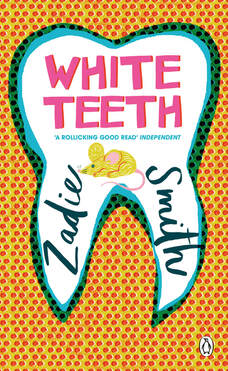
Apocalyptic themes are also located in the clash between religion and secularism. We can read this in the poems by Heaney and Boland, who examine the legacy of British colonialism in Ireland, but I’m mainly thinking of Zadie Smith’s White Teeth here. Smith’s novel, published in 1999, plays with the notion of apocalypse and religious/cultural fundamentalism through her exploration of the clash between “east” and “west” in late 20th century multicultural Britain and all the anxieties this has given rise to in British culture. Indeed, the novel begins with an “An End of the World Party” in the 1970s and ends on the millennial New Years Eve of December 31st, 1999; though yes, of course, the “real” millennial marker was Dec 31, 2000, which I think was part of the joke in Smith’s novel (a book all of you should read when you get a chance, especially if you enjoyed “The Waiter’s Wife,” an early version of a chapter that was later revised for the novel). In any case, the apocalyptic imagination is closely tied to trends in religious fanaticism, and in the stories by Rushdie, Kureishi, Desai, and Smith, we seem to come across a sense of religious “fraud”—or, a sense that fundamentalism leads to “fraudulent” rather than hybrid identities. Also, we can’t ignore how each of these stories is concerned on some level with Muslim roots and religion, both in its “native” soil and transplanted to the west, or British soil.
Ironically, on the surface at least, it would seem the texts indicate that western secularism offers an antidote to the rise of religious fanaticism within Islam; yet, as Kureishi clearly indicates through the character of Ali, because the west and western culture can often be quite bigoted, unwelcoming, and failing to offer a place or sense of belonging for those who immigrate, this has also in part led to the rise of disaffected Muslim youths in Britain who have turned to religious “fanaticism” as a way of reclaiming their roots and identity, and more importantly, a sense of self-worth in the face of ongoing racism and discrimination. Also see White Teeth for a wonderfully rich and comedic/horrific treatment of this in the characters of Magid and Millat, the twin sons of Alsana and Samad, who do end up fulfilling Alsana’s fears of her children being lost in a confusing world where it is impossible to know who/where one is. Clara and Archie’s daughter, Irie, also ends up having to deal with this issue and at one point, attempts to live with her fundamentalist evangelical grandmother as she explores her biracial identity. Of course, Alsana herself is forced to revise her “racist” prejudices and stereotypes, something that must inevitably occur when a country experiences mass immigration of “others” who in turn, which we often forget, see the “natives” as “others” as well. All four stories conclude that as long as we view immigration and diaspora through the lens of prejudice and fear, then we will not end up surviving, and we will only continue the violent cycle of history that the myth of apocalypse so vividly imagines.
I would also like to add here that in each of the stories’ often satirical representations of Muslim practitioners and communities, none of the authors are implying that there is something inherently “wrong” with Islam, or, that it is the “fault” of their religion for why the characters have such a difficult time assimilating to the western, modern world. Rather, it is not so much a failure of the religion itself but the ways in which culture can distort and corrupt the original precepts and beliefs of any religion; also, an implicit message in these texts is their suggestion that when examining postcolonial identities and issues of assimilation, the west is equally beholden to examine and understand the “other’s” perspectives and experiences. For example, there is an increasing urgency in our post-9/11 era for non-Muslims, or “westerners,” to learn about Islam and Islamic culture in order to avoid stereotyping, reject fear and racial conflict, and resist the continuation of imperialist politics.
Ironically, on the surface at least, it would seem the texts indicate that western secularism offers an antidote to the rise of religious fanaticism within Islam; yet, as Kureishi clearly indicates through the character of Ali, because the west and western culture can often be quite bigoted, unwelcoming, and failing to offer a place or sense of belonging for those who immigrate, this has also in part led to the rise of disaffected Muslim youths in Britain who have turned to religious “fanaticism” as a way of reclaiming their roots and identity, and more importantly, a sense of self-worth in the face of ongoing racism and discrimination. Also see White Teeth for a wonderfully rich and comedic/horrific treatment of this in the characters of Magid and Millat, the twin sons of Alsana and Samad, who do end up fulfilling Alsana’s fears of her children being lost in a confusing world where it is impossible to know who/where one is. Clara and Archie’s daughter, Irie, also ends up having to deal with this issue and at one point, attempts to live with her fundamentalist evangelical grandmother as she explores her biracial identity. Of course, Alsana herself is forced to revise her “racist” prejudices and stereotypes, something that must inevitably occur when a country experiences mass immigration of “others” who in turn, which we often forget, see the “natives” as “others” as well. All four stories conclude that as long as we view immigration and diaspora through the lens of prejudice and fear, then we will not end up surviving, and we will only continue the violent cycle of history that the myth of apocalypse so vividly imagines.
I would also like to add here that in each of the stories’ often satirical representations of Muslim practitioners and communities, none of the authors are implying that there is something inherently “wrong” with Islam, or, that it is the “fault” of their religion for why the characters have such a difficult time assimilating to the western, modern world. Rather, it is not so much a failure of the religion itself but the ways in which culture can distort and corrupt the original precepts and beliefs of any religion; also, an implicit message in these texts is their suggestion that when examining postcolonial identities and issues of assimilation, the west is equally beholden to examine and understand the “other’s” perspectives and experiences. For example, there is an increasing urgency in our post-9/11 era for non-Muslims, or “westerners,” to learn about Islam and Islamic culture in order to avoid stereotyping, reject fear and racial conflict, and resist the continuation of imperialist politics.
For example, to cite a salient point made by Professor Asma Barlas, a prominent scholar of Islam who offers anti-patriarchal readings of the Qu’ran, and whose lecture I attended when she visited Wright State in 2013. Dr. Barlas noted how in America and Britain, Muslims are granted, like all U.S./U.K. citizens, freedom of religion due to separation of church and state; yet, when America and Britain (as the primary coalition members/allies) go into countries like Iraq, Afghanistan, Pakistan, etc., the policy is to demand that Muslims give up their religion, or secularize their religious practices because there is the broadly false assumption that Islam inevitably leads to religious fanaticism and jihad. In other words, as long as Muslims are on American or British soil, they are granted the right to practice their faith, but on their own soil Islam is viewed as dangerous and unstable. This also seems to ignore the long history of western religious fanaticism and fundamentalism within Christianity, and is thus yet another form of cultural/religious hypocrisy. The irony in Kureishi’s story, and as explored more fully in Smith’s novel, is that Islamic extremist groups are often “home-grown” on British soil and its participants are second- and third-generation Muslims who have felt rejected and discriminated against by their country of birth, which never claims them as one of their own. Thus, they are indeed caught between two worlds: the “homeland” of their parents and grandparents, which they have never seen or visited, and the “homeland” of their birth—this lack of belonging or sense of place can lead to reactionary social and cultural separatism. (Kamila Shamsie’s recent novel, Home Fire, explores many of these themes and issues, and I also teach this text in classes on contemporary women’s writing.)
So, do the stories we’re reading this week offer any kind of antidote or third alternative that leads away from binary thinking and the seemingly eternal clash between East and West? I would argue that each of the stories suggest the need for all of us, “west” and “east,” “white” and “black,” “Christian” and “Muslim,” to embrace cultural hybridity; that this must be a mutual movement and not where only one side of the equation is obligated to “assimilate” to the other—for that is not true hybridity but continuing domination. And this would not be anything necessarily new or radical, since historically speaking many clashing cultures, politics, and religions have found a way to coexist (or else we would have self-destructed as a species a long time ago) through embracing Religious Syncretism — which “tends to facilitate coexistence and unity between otherwise different cultures and worldviews,” and has often developed in religious movements or belief systems. This perhaps could also serve as a model for a sexual politics that moves away from gender oppression (often exacerbated within any religious fundamentalist community), requiring men and women to develop a sense of mutual reciprocity founded on a respect of each other’s differences (rather than the repression of difference, or using difference as a justification for oppression), for only that can lead to true equality.

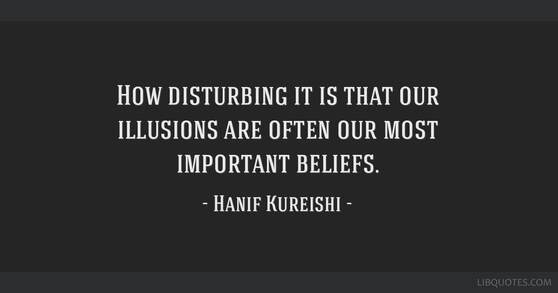
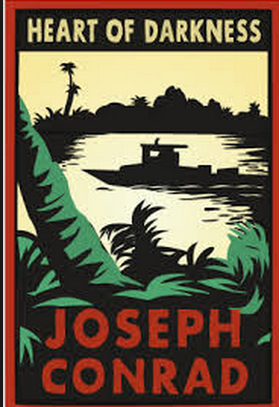
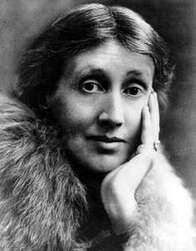
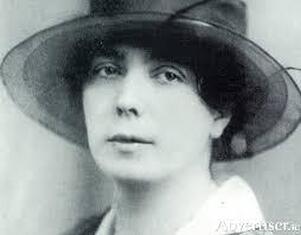
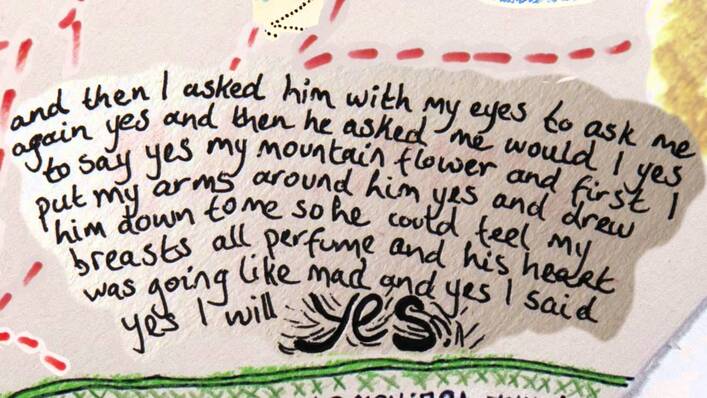
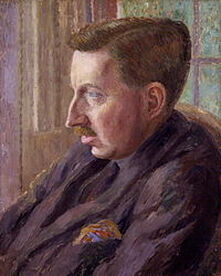

 RSS Feed
RSS Feed
